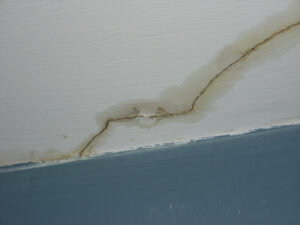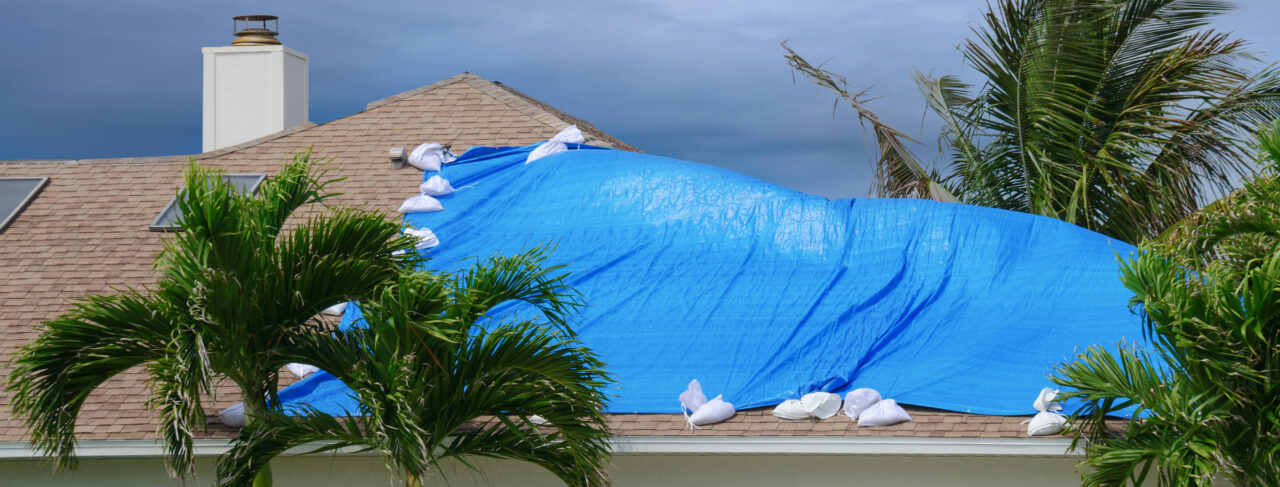We really hope you never have to research ‘how to tarp a leaking roof’ or ‘emergency roof tarp installation’ but the fact is we live in Australia, a land of extremes and harsh weather. It’s likely that at some stage you’re either going to have to tarp up your own roof or help out a friend or neighbour at some stage when their roof starts to leak and you’re trying to save their home.
Storm season is usually a Brisbane roof repair company’s busiest time so if you have an issue with your roof (missing tiles, leaks, water getting in, etc.) we will do everything to get out to your home as quickly as possible. However, there’s a chance we and other emergency roof repair companies in Brisbane may be absolutely flat strap and it could take some time to get out to your home to inspect your roof.
If this is the case you may need to put a tarp on your roof just to keep the rain off until we can get there, so we’ve put together some information on how to tarp a roof to keep your home safe.
The Best Way to Tarp a Leaking Roof in an Emergency
Safety Is the Most Important Factor
There are a few things you should know about tarping a roof before you get the ladder out of your shed.
Waiting for a professional to tarp your roof is always your best and safest option, however, you may need to take swift action to prevent any further damage to your home. If you need to put a tarp up yourself, ask for assistance as tarping a roof on your own is not recommended.

Some basic roof tarping safety rules to follow:
- NEVER get up on a roof during an electrical storm
- Don’t attempt to tarp a roof in high winds
- Don’t step on wet tarps as they can be incredibly slippery
- Try to reduce trips up and down the ladder by being prepared
- Ladders can become extremely slippery in wet weather
- Dunlop Volleys are by far the best shoes to wear when getting up on a roof 🙂
Evaluating the Damage After a Storm
For most Brisbane residents, roof tarping is most likely needed after a storm when you notice that your roof is leaking, or there are broken, damaged or missing tiles. Sometimes it’s difficult to find a leak – if you’re having trouble, take a look at our blog post What to do if your roof is leaking to get you started.
Sometimes leaks actually start in one area but will move in paths of least resistance to another section of your roof, so it’s not always obvious that a leak is coming from an area close to a wet area or pool of water.
If your roof has sustained major damage, don’t get on it as it may be unstable and could be dangerous. If however you deem the roof is safe to walk on here’s a few things to look for:
- Missing, cracked or damaged tiles
- Tears or warps in metal roofs
- Metal sheets that lift or blow around in the wind
- Broken skylights
- Damage from items like tree branches or other items blown around
Tarping Your Roof
Once you’ve inspected your roof and found where you need to cover up the leak or problem, here’s what you will need to commence tarping your roof:
- A tarp (obviously) the thicker and heavier the better
- Ropes

The size of the tarp you have will determine what you’re able to do with it. For example if you only have a small tarp and can’t get a hold of a bigger one (often tarps will sell out during storm season) you may have to take a different approach than if you can get your hands on a large tarp that covers most or all of your roof.
Small Tarps
If you only have a small tarp available you can carefully slide the tarp under your roof tiles to secure it. It’s always better to tie down tarps to an anchor point around your house like a patio beam, carport support, etc.
Large Tarps
If you have access to a large tarp you can carefully get onto your roof and unroll your tarp.
- Tie a rope to each corner and also to any eyelets in the around the edges of your tarp
- Tie down ropes to something secure (beams, supports, trees, fence supports, full water tanks, etc)
- Ensure the ropes are tied down tightly and are keeping your tarp flat against the roof.
There’s really no hard and fast rules when it comes to tying down or tarping your roof in an emergency. Anything that can keep the water out and stop it from damaging your home is going to be beneficial and how you do that will depend on what you have available or what you can purchase in an emergency.
If your roof has been damaged and is tarped awaiting repairs, contact Gutter and Roof Repairs to evaluate your roof damage and provide an urgent quote and repairs. Call us today on 0421 460 580.



